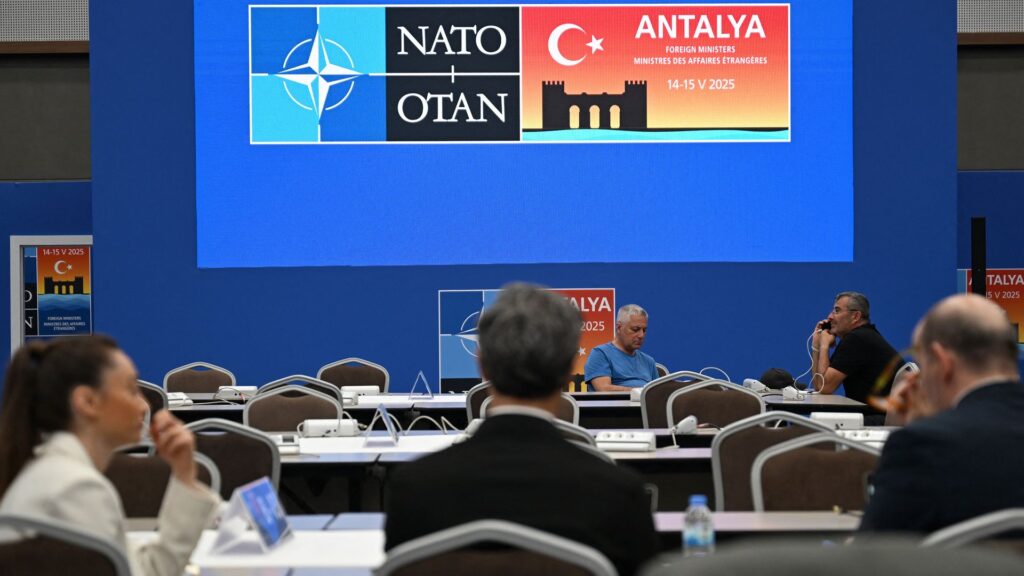NATO members are working on a proposal to raise defense spending to 5% of gross domestic product by 2032. Though still under negotiation, the effort would mark the largest military investment by the alliance since the Cold War. None of NATO’s 32 members, including the United States, currently meet that threshold.
During the week of May 4, Dutch Prime Minister Dick Schoof told reporters that the plan includes a 3.5% baseline for core defense budgets and an additional 1.5% for related areas like infrastructure, cybersecurity and military mobility.
NATO foreign ministers will likely discuss the framework during the week of May 11 in Antalya, Turkey, with a formal proposal likely at the June summit in The Hague.
When asked about the numbers, NATO Secretary-General Mark Rutte did not confirm what the new numbers might be, saying, “I’m not going to confirm the figures. There are many rumors floating around,” according to a report by The Associated Press.
How does this differ from NATO’s current goal?
Unbiased. Straight Facts.TM
The U.S. ranks third among top military spenders in the NATO alliance, spending 3.19% of GDP. Others top countries include Poland (4.09%) and Estonia (3.41%).

NATO’s long-standing benchmark has been 2% of GDP. According to the alliance’s annual report, 22 NATO members had hit the 2% spending target by 2024, up from just three in 2014. Poland (4.07%), Estonia (3.41%) and the U.S. (3.19%) remain among the top contributors. The report states that European allies and Canada have added more than $700 billion in defense spending over the past decade.
President Donald Trump has repeatedly criticized allies for underfunding their militaries and warned that failing to meet targets could weaken America’s commitment to the alliance. The Trump administration has publicly pushed NATO allies to raise spending to 5%, with U.S. NATO Ambassador Matthew Whitaker calling it a “necessity for our security.”
“The alliance is facing significant threats, as all of you know, and we must be prepared to meet them head-on. That level of investment is necessary to ensure allies have the capabilities to deter and defend the alliance, and contribute to our collective defense.” Whitaker said during a press briefing. “President Trump has been unwavering in his commitment to our collective security and he has fundamentally changed the conversation on defense investment at NATO.”
What counts toward the additional 1.5%?
Ministers will also debate what types of spending qualify under the extra 1.5%. Options under review include spending on dual-use technologies, cyber defense and defense-related infrastructure. It remains unclear whether this spending must be new or if it can consist of current expenditures repurposed under broader defense classifications.
Whitaker said this component must “be defense-related,” but added that it goes beyond traditional equipment like tanks and artillery.
What role does the US play in shaping this effort?
The proposed 5% plan aligns closely with Trump’s long-standing demands for a greater share of the burden from European allies. U.S. officials have said the imbalance in defense contributions undermines alliance cohesion and effectiveness. In previous comments, Trump even suggested allowing Russia to act against countries that fail to meet spending commitments.
The Hague summit will be Trump’s first as president since returning to office, and diplomats expect the session to focus heavily on spending and industrial readiness, not Ukraine’s potential NATO membership, which has stalled.
How realistic is the 2032 deadline?
European officials acknowledge that hitting the 5% target in seven years will be difficult. Several countries have only recently reached the 2% mark, and rapidly scaling budgets would require political and economic overhauls. However, proponents argue that increasing threats from Russia and the need to deter future conflicts make investment necessary.
Defense ministers are scheduled to review a classified set of capability targets during May in Brussels. The review could guide the formal adoption of the new spending pledge at the June 24–25 summit.
contributed to this report.


